
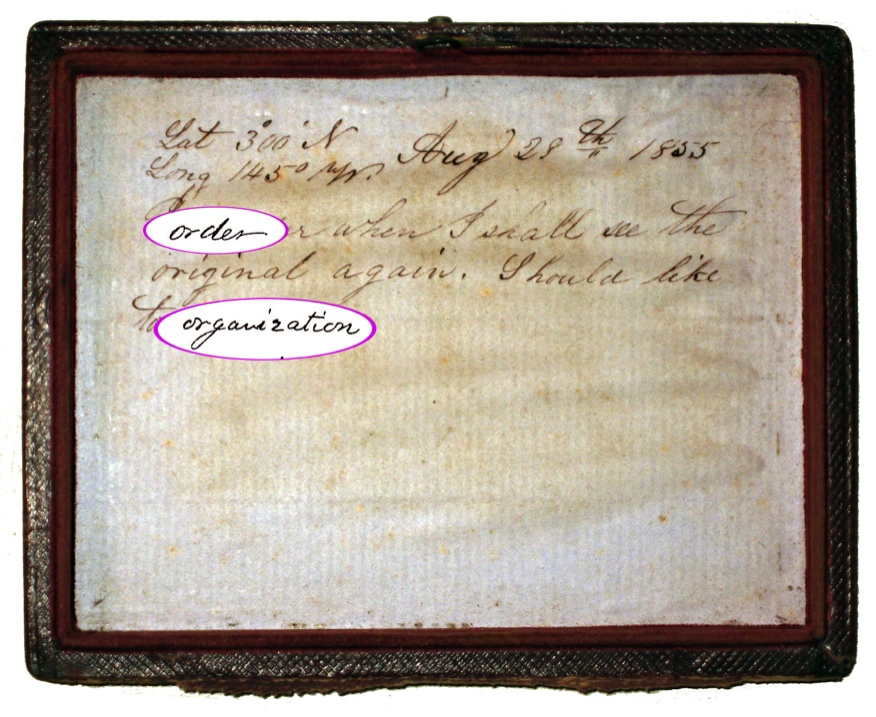
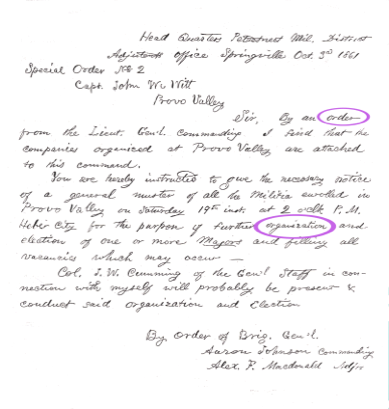
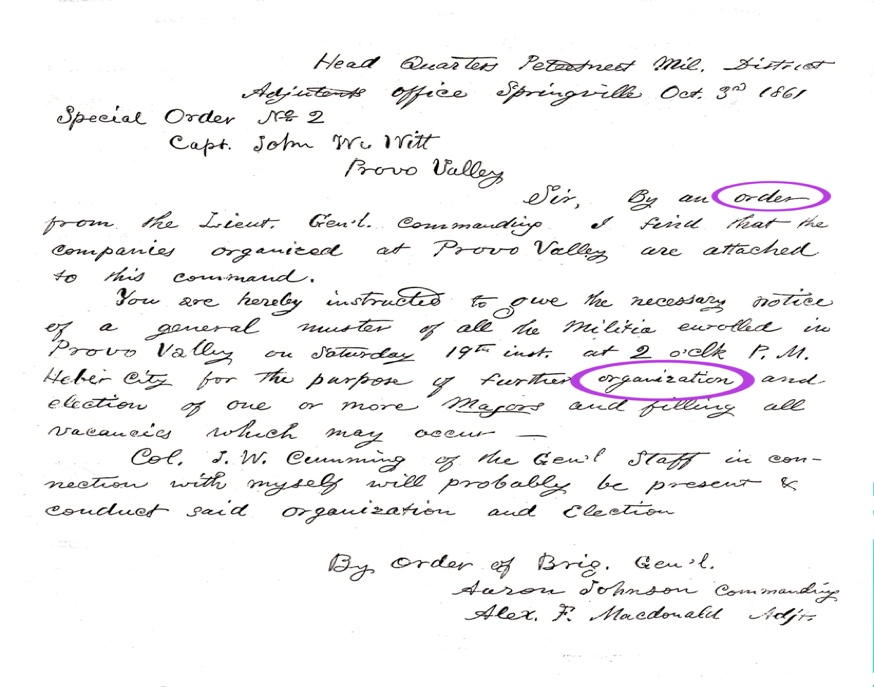
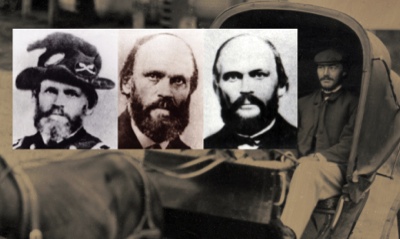
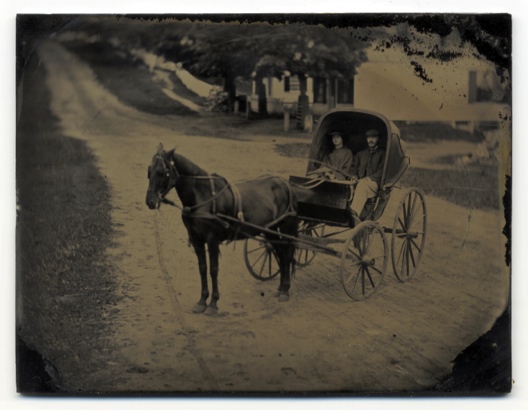
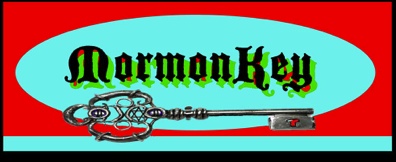
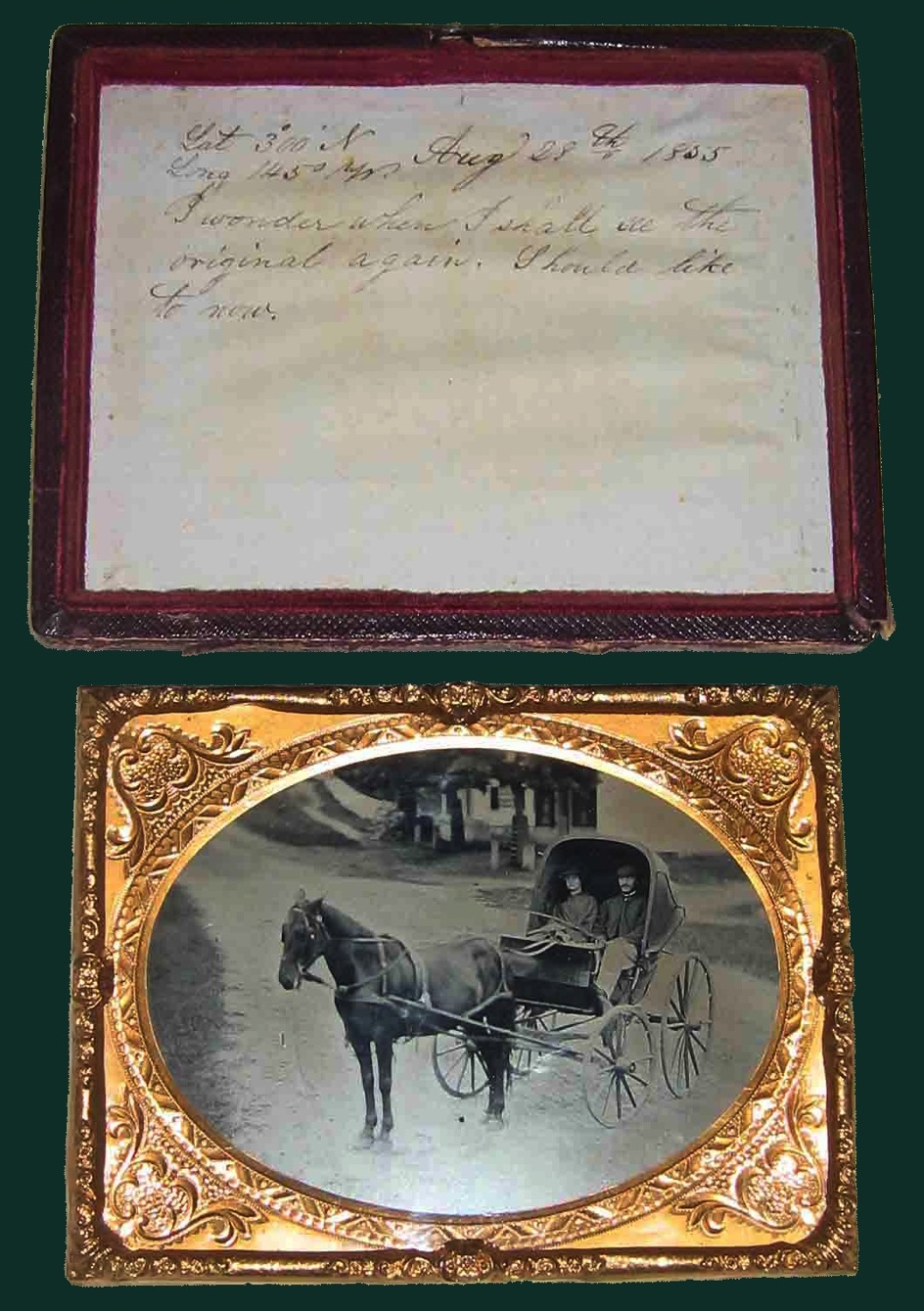
(Courtesy: Richard Warren Lipack Collection)
Aaron Johnson and Jane Scott insert photographs: Used by permission, Utah State Historical Society.
Aaron Johnson militia records courtesy of: Department of Administrative Services. Division of State Archives and Record Service, Territorial Militia Records, 1849-1877, 1905-[1917], Utah State Archives and Records Service, Series 2210.
1855 Aaron Johnson Ambrotype
PALEOGRAPHIC AUTHENTICATION PROCESS 1
This is the first example of five to a show an effort both at utilizing and as well demonstrating the rather finite aspects of paleography and paleographic comparative analysis in the authentication of handwriting that is not accompanied by the writer's signature.
In order to do this one must first find a suitable certifiably "known" clear example of handwriting with a handwritten signature on it that one seeks to compare to an unsigned example of handwriting of the suspected subject for which one has a signed example of the subject's handwriting that one is seeking to authenticate,
Each example of this that comes to be selected for paleographic authentication that becomes the verified "known" element or "exemplar" is used as the benchmark in comparitive analysis to authenticate the "unknown" element or unsigned handwritten inscription.
In this case, the unknown element is the handwritten unsigned ink inscription found behind the 1855 Ambrotype photographic image primary to this discussion.
By seeking out similar letters or numbers handwritten in both the "known" element used as an "exemplar," with that of the "unknown" element of the unsigned inscription found behind the 1855 1/4 plate Ambrotype discussed herein is now one of the most important aspects of the comparative paleographic authentication process.
In following it would be of most benefit to look first at the information written in brown ink found on the paper inner case liner behind the 1855 cased image of Aaron Johnson's 1/4 plate Ambrotype taken on 28 August 1855 in Springville, Utah Territory.
Look first at the paleographic study exemplar shown above, i.e.: The Aaron Johnson militia records letters dated "Oct. 3, 1861" and annotated "Special Order No. 2" and signed below "By order of Brig. Gen'l. Aaron Johnson Commanding."
Now examine the two words encircled in purple oval rings found in the October 3rd letter hereof, i.e.: the words "order" and "organization."
Following this, carefully inspect the inscription found on the inner case liner of the 1855 1/4 plate Ambrotype shown in the photograph above, Then look closely at the same words "order" and "organization" discussed herein that that have been superimposed encircled in purple as found in and taken from "Oct. 3, 1861" dated Aaron Johnson signed militia letter hereof that originally show the same words "order" and "organization."
What has been superimposed over the image of the inscription found in the 1855 1/4 plate Ambrotype is clealry the same exact words that originally appear in the "Oct. 3, 1861" militia letter signed by Aaron Johnson as Brigader General.
Now look at the word "original" that is part of the inscription found on the case liner of the "Aug. 28, 1855" dated 1/4 plate Ambrotype primary to this discussion. Following this, now examine the first exemplar word "order" shown above the 1855 Ambrotype inscription penned word "original" and below it look at the exemplar word "organization" as well. Finally, compare the various constructive elements between the word "original" and the exemplar words "order" and "organization."
More specifically, comparison of the "or" found between the "exemplar" or "known" examples as found in the words "order" and "organization" from the "Oct. 3, 1861" militia letter need to now be made against the word "original" found in the "unknown" 1855 1/4 plate Ambrotype inscription primary to this discussion.
To finalize the paleographic process and conclude and confirm that all three "or" samples found between the words "order," "organization" and the unknown variable word "original" are in the same hand and therefore by the same person identifiable by the "known exemplar," one merely just needs to look at complete similarities in and between the three different "or" examples that comprise two distinctly separated variables.
All that needs to now be done is to look at each of the 'slopes' and the way each letter 'flows' and 'connects" between each other - or at points where letters break or are disconnected.
If all of the elements all basically match and are indentical as to all basic properties of character in the form of slope, flows and connects, clear-cut matches unto itself confirms that the "unknown" inscription found in the "Aug. 28, 1855" dated 1/4 plate Ambrotype - has unquestionably been executed in the very same hand as that of the "known exemplar," subject and author, i.e.: Aaron Johnson.
As a further interest there is another aspect of the 1855 Aaron Johnson 1/4 plate Ambrotype that should be amply noted. This other aspect of interest can be found in the "lat" and "long" number coordinates showing within the inscription.
Learning more or just knowing about the present day street addressing system in use in many parts of Utah, one will know that the "lat" and "long" coordinates found on the 1855 Ambrotype actually cite Aaron Johnson's home street address. It is most fascinating that this very street address coordinate system is in standard use today including modern present day Springville and Salt Lake City; and is based on this form of address that Aaron Johnson used here.
Besides Aaron Johnson being the first Mormon Bishop of Springville, he was as well its founding postmaster. The handwritten Springville street address coordinates found in this 1855 quarter-plate Ambrotype written by its acting postmaster remains as simple evidence that raises a very interesting question. Could it fact have been that Aaron .Johnson himself was actually the Mormon person who actually 'invented' the "lat" and "long" street address coordinate system still in use today through-out Utah?
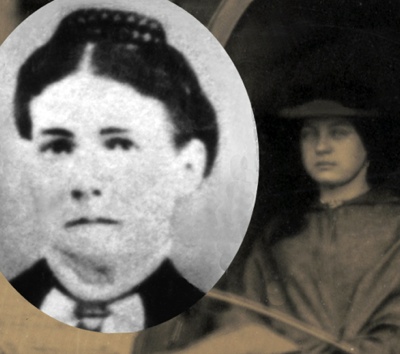
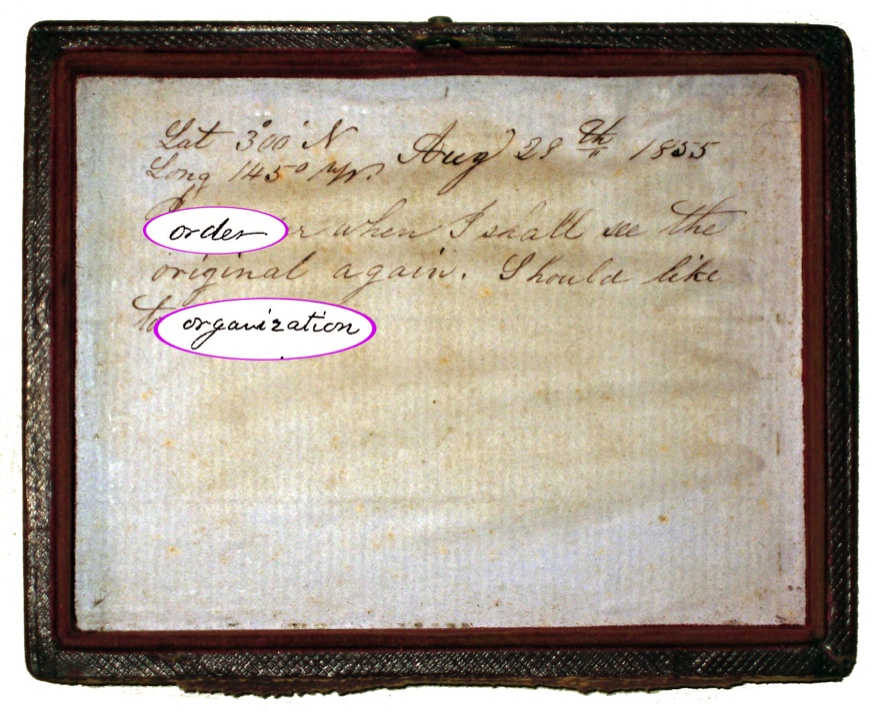
"MORMONKEY: The Key to News and History of the Mormon Faith"
